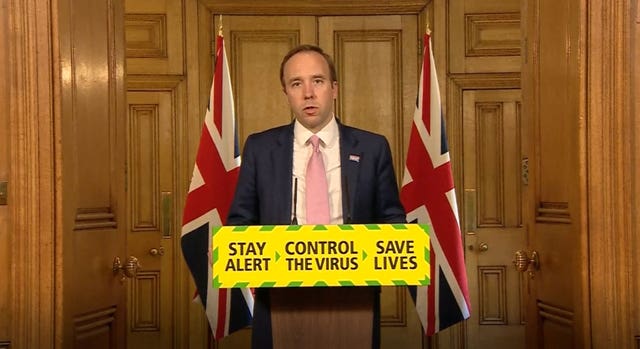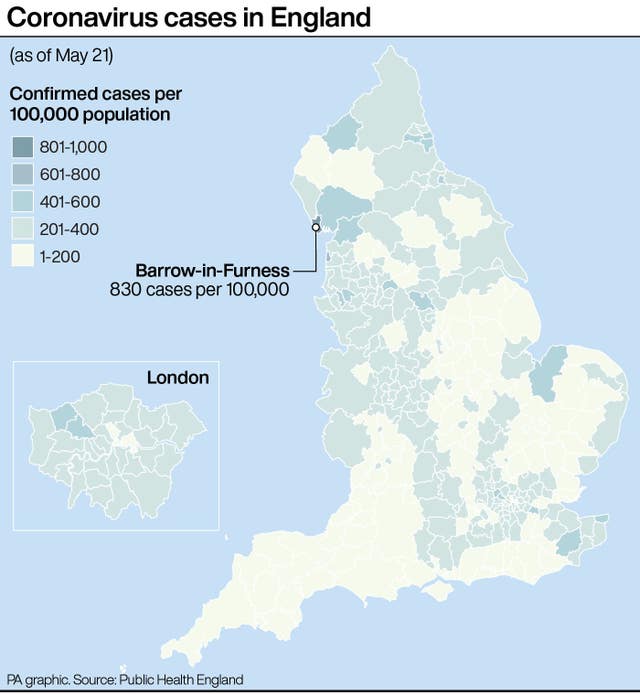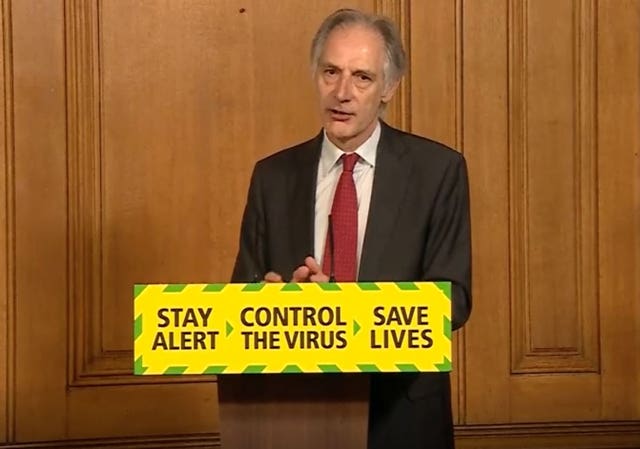Widespread testing and contact tracing was stopped in mid-March due to the “sheer scale of cases in the UK”, a senior Public Health England (PHE) official has said.
Professor Yvonne Doyle, PHE’s medical director, told the Commons Science and Technology Committee that many hundreds of thousands of people had been exposed to coronavirus by the time testing and tracing was stopped around March 12.
The Government’s testing coordinator Professor John Newton, who is also PHE’s director of health improvement, said the testing plans were abandoned after a million cases of Covid-19 were predicted across the UK.
Hancock
Their comments contrast with those from Health Secretary Matt Hancock, who has defended leaving care home guidance in place until March 12 that said the risk of infection across care homes was low.
On Tuesday, Mr Hancock told the Commons that community transmission of coronavirus in the UK in early to mid-March was low.
Prof Doyle told MPs the policy decision was to very much focus on the NHS in terms of testing and that, given the testing resources available, a decision was taken to stop more widespread community testing and tracing.

She said it was stopped in March “because of the sheer scale of cases in the UK, which had been introduced by multiple introductions, particularly after half-term, and from European countries we now know had large amounts of prevalence themselves”.
She added: “So we have multiple introductions, with many hundreds of thousands of people by March who had now been exposed to this virus in this country.
“Contact tracing could not possibly have had the capacity to address that.
“And with the capacity of lab testing and our contact tracers, we felt the most important thing to do was to focus on where there was national concern, which was the capacity of the NHS, to accrue that testing.”
Prof Doyle told MPs the organisation did not reject the South Korean model of mass coronavirus testing, and had in fact followed a similar path until March.

“We did not reject the South Korean model, in fact we were very interested in what was happening internationally from the get-go.
“The testing capacity and testing profile of PHE’s approach in the contain phase – which is between January and March – was very close to the one of South Korea for quite a long time, into early March.”
Prof Newton said there had been a discussion in the Scientific Advisory Group for Emergencies (Sage) which established that it would “not be worthwhile” to continue contact tracing once community transmission took hold in the UK.
Abandon
He said the decision in March to abandon it was made by Government informed by all its advisers, not just PHE.
“When in March it became apparent that community transmission was occurring and we had multiple injections, introductions from different countries in the UK, that decision was then enacted,” Prof Newton told MPs.

“It was a decision of course of Government, informed by all its advisers, not just Public Health England.”
He added: “The epidemiology was crucial, we had an increase in the number of cases in March.
“The advice from modellers was that within a short period we would expect to be having a million cases in the UK, and of course if you have a million cases there’s no way, however much contact tracing or testing capacity you have, that you can pursue the South Korea model.
“At that point, the Government made the decision to move to lockdown as the most appropriate response to the epidemiology in the UK at the time.”
Downing Street said the decision to move away from contact tracing in mid-March was taken by the Government’s experts.
Asked if it was a decision by ministers, the Prime Minister’s official spokesman said: “It was set out at the time by the Government experts who were attending the daily press conference why they had reached the decision to start focusing their testing on people who were sick in hospital.
“That’s how I remember the decision making process.”
Prof Newton
Prof Newton also told the Science and Technology Select Committee that more than half of the home testing kits sent out had been returned, but he did not have an up-to-date figure.
He added: “I think certainly more than half, and we would like to get that amount up.
“A lot of the ones which were counted as they left were not home tests, they were the satellite tests sent out to care homes.”
When pressed on the current return rate he said he would provide it to the committee after the session.
Prof Newton added: “I am afraid I don’t have that figure but it can be provided.”
Related – Herd immunity without vaccine or treatment is a ‘Darwinian policy’

